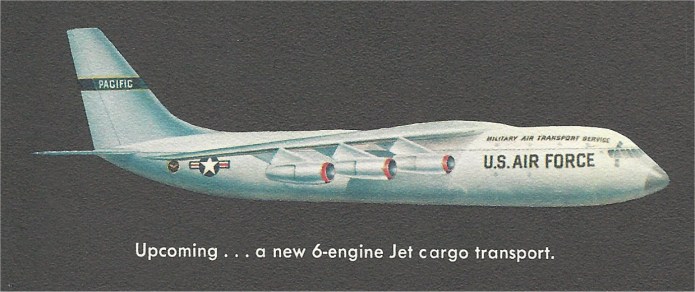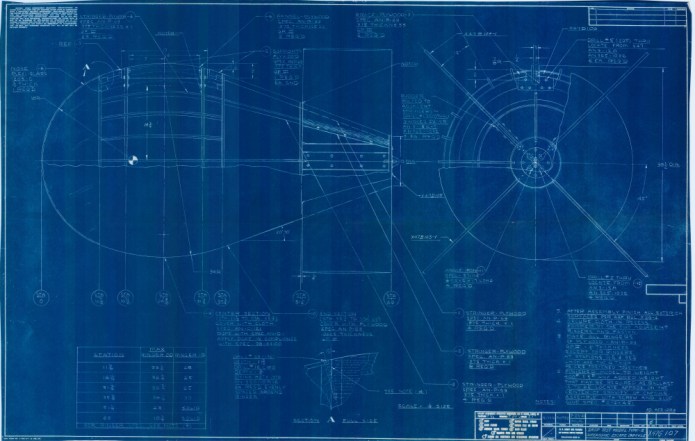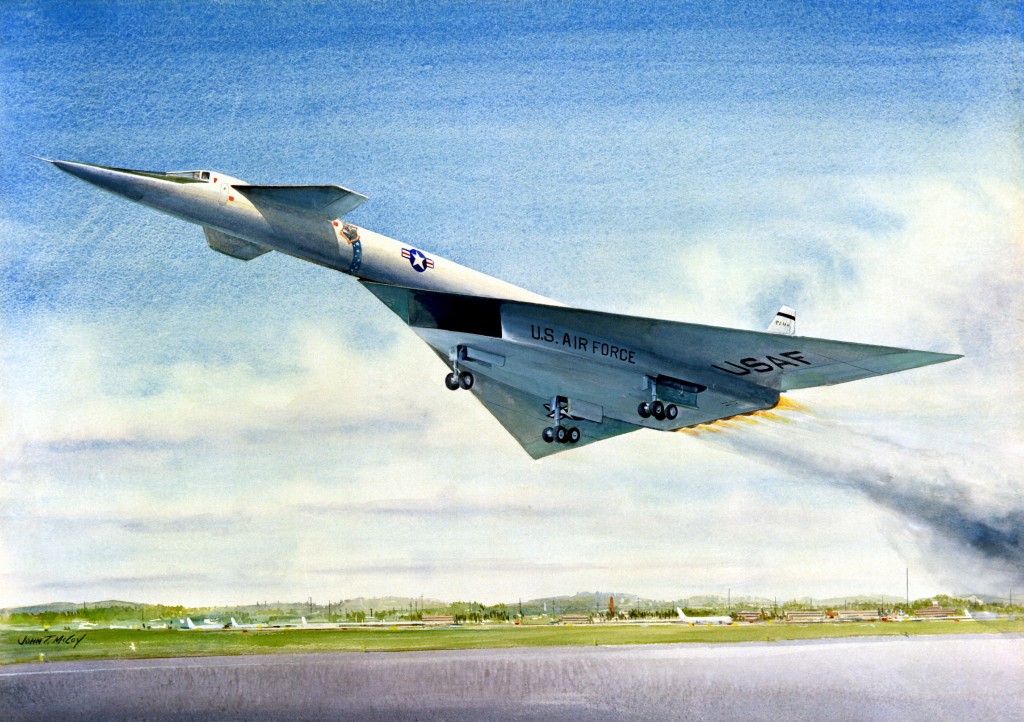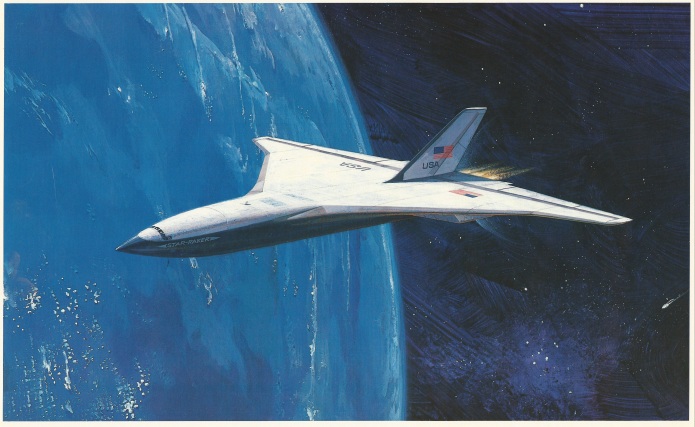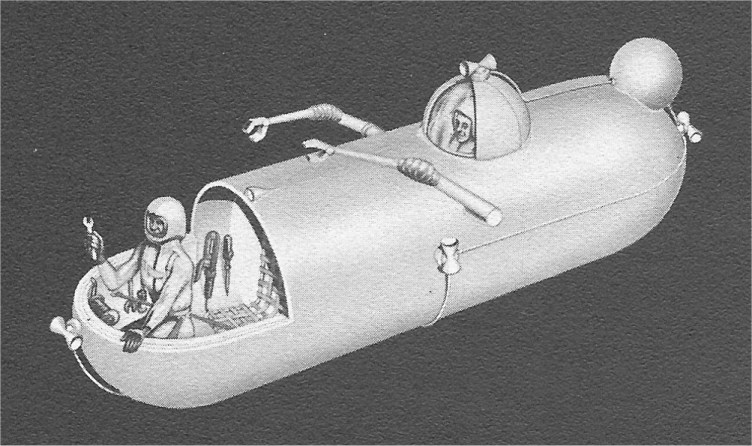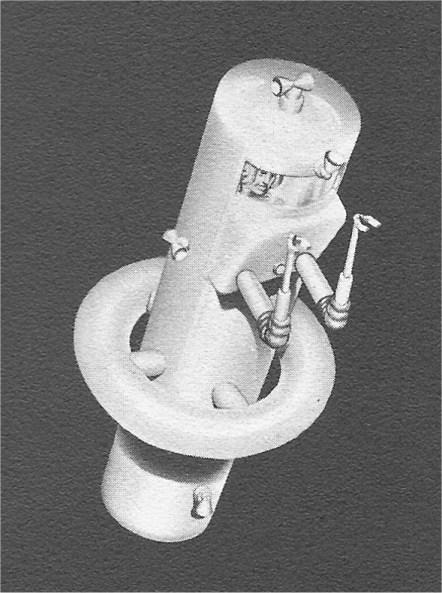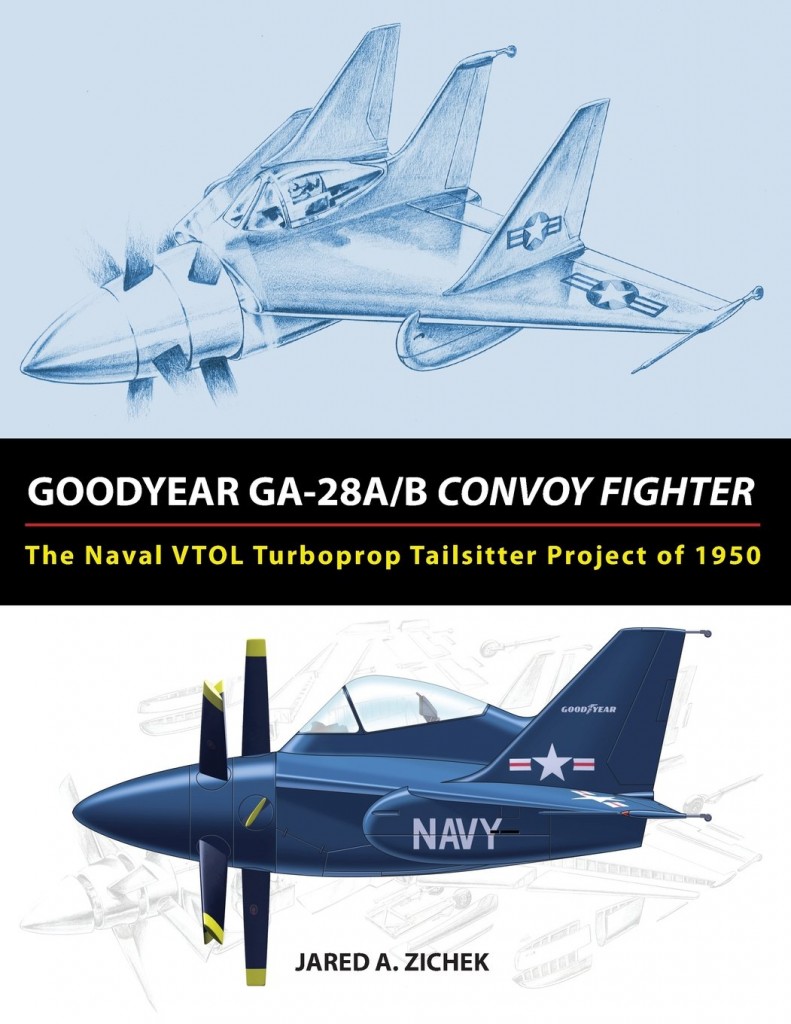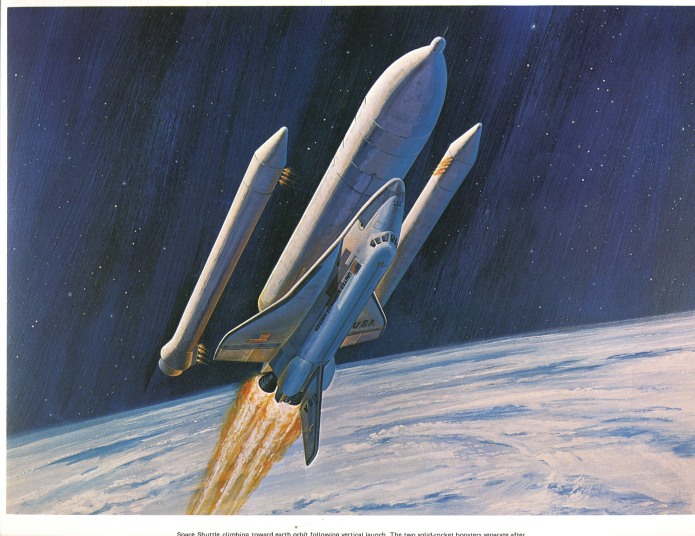A late 1950’s Lockheed-Georgia concept for a large cargo transport. Clearly an outgrowth of the technologies and design elements of the C-141, this may have been an early stab at what would become the C-5 Galaxy. No further data.
Today I picked up four large format scans from a local print shop. All were scanned in full color at 300 DPI; the B-52 diagram was so large that I had to reduce it in size a bit – from 300 to 250 DPI – to make it work in most of my image processing programs. Still… with an original 110 inches long, scaling down a bit really isn’t much of a loss.
First: a Boeing model shop diagram of a B-52B display model at 1/40 scale. Model shop diagrams are often the best bets for clear, accurate aircraft diagrams.
Second, an old Boeing diagram of the Model 80 trimotor:
Then the USAF “supersonic escape capsule” which sure looks a lot like Fat Man:
And then a Rocketdyne diagram of the Atlas booster rocket engine:
These will likely be offered up to APR Patreon Patrons. If you want in on that, and to help out on the effort to procure these things (trust me, they’re *not* cheap!), please consider signing up for the APR Patreon.
This piece of art has popped up from time to time over the decades (it dates from 1959 or before), showing a schematic view of the basic layout of a nuclear-powered bomber. And while the version below is not particularly clear or high-rez, it has the advantage of being in color.
The truly gigantic-looking bomb is likely not pure artistic license. At the time Lockheed was designing bombs that looked just like this at extraordinary size; they had substantial rocket propulsion capability to let the bomber release the weapon at a considerable standoff distance.
Found this painting online a while back, a 1961 illustration of he XB-70 taking off.
In the late 1970’s Rockwell international studied the “Star-Raker,” a large airbreathing horizontal takeoff and landing SSTO designed to support the Solar Power Satellite program. This 2,268,000 kg gross weight vehicle would have a payload of 89,200 kg; the claim was that this vehicle could fly roughly daily and very cheaply. Of course, at about the same time Rockwell was claiming that the Space Shuttle would have a two-week turnaround and would be the cheapest ticket to space…
While Star-Raker was far from the biggest or most powerful launcher studied for SPS, it was certainly one of the more interesting concepts. While a number of SPS reports have described the Star-Raker, to my knowledge a dedicated Star-Raker design report has not come to light. If anybody knows of such a thing, by all means let me know.
Star-Raker garnered a bit of press back in the day, likely due in part to the fact that Rockwell released a number of pieces of concept art, like the one below showing the vehicle in orbit.
I have uploaded the full-rez version of this to the APR Patreon “Extras” folder for 2015-08 on Dropbox. It is available for all $4 and up APR Patrons.
Another Lockheed concept circa 1959 for a “space scooter.” It’s clearly meant to be some sort of “work pod,” but blasted if I can figure out the logic of it… two crew separated by an inconvenient distance, with one fully armored against the dangers of space, and one virtually fully exposed (and wearing a “space suit” little better than the pressure suits worn by 1950’s interceptor pilots).
This comes from a 1959 Lockheed-Georgia PR booklet, no further data was provided. It was described as a “Space Scooter,” which would indicate something akin to the Convair “Space Taxi” shown in US Spacecraft Projects #1. However, this looks like not so much an inter-spaceship crew transfer system as a “work pod” for the construction of spacecraft and space stations. The torus undoubtedly contains thruster propellant; possibly high-pressure gas for cold-jet thrusters.
This looks like an interesting book:Goodyear GA-28A/B Convoy Fighter: The Naval VTOL Turboprop Tailsitter Project of 1950 by Jared Zichek.
It’s available in both paperback and epub from Amazon.
The same author also produced the excellent Secret Aerospace Projects of the U.S. Navy: The Incredible Attack Aircraft of the USS United States, 1948-1949
A Rockwell illustration showing an almost-but-not-quite-final Space Shuttle design. The only obvious major difference between this design and actual Shuttle is the rounded dome on the nose of the ET. This *may* have been a cover over a de-orbit solid rocket motor, but if so it was a small one. Other changes include differences in the booster sep motors; this painting shows four nose BSMs in a straight vertical line and four tail BSMs in a straight vertical line. As built, the forward BSMs were in a 2X2 square array, while the at BSMs were arrayed around the nozzle. Some minor difference in thermal tile pattern on the forward fuselage of the Orbiter.
The full-rez version has been made available for $10-level patrons at the APR Patreon.
Just released today… an official “History of the Manned Orbital Laboratory” by Carl Berger of the MOL Program Office, 1970. This originally Top Secret history still has a number of blacked-out text redactions and, sadly, no illustrations in its 356 pages. I’ve only skimmed through it, but it looks to be an interesting read.
Direct link to the “History of MOL” PDF file
The table of contents:
